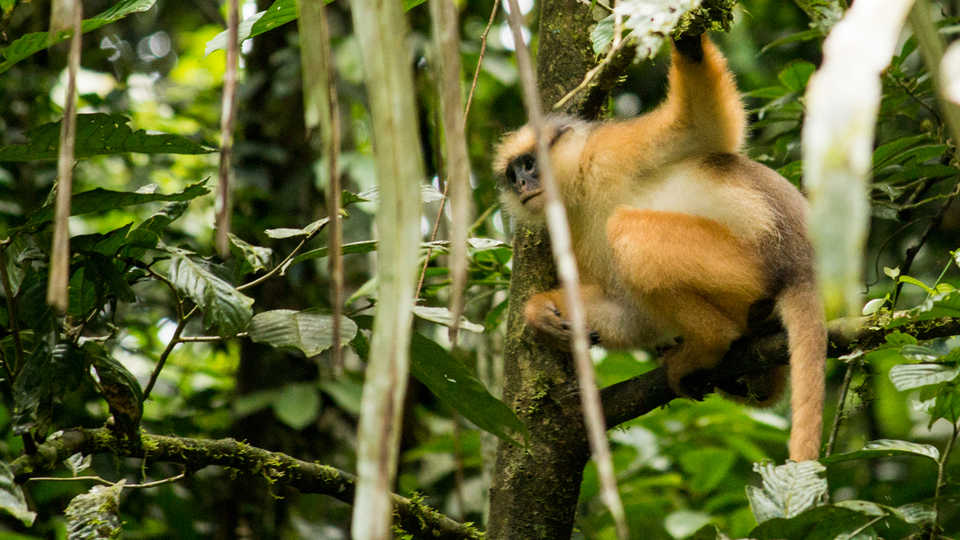In this lesson, students will:
1. learn that the rainforest is divided into layers.
2. learn that different plants and animals inhabit different layers and serve different functions in the rainforest.

© Luke Mackin
What are the different layers in a rainforest? Students will learn about these layers and the plants and animals who inhabit them by singing a fun Jungle Layers song.
In this lesson, students will:
1. learn that the rainforest is divided into layers.
2. learn that different plants and animals inhabit different layers and serve different functions in the rainforest.
assessment sheet (one per student)
colored pencils, crayons or markers
This poster and accompanying song take students from the tip top of the canopy down through the understory, forest floor, soil and bedrock. Students learn about the three foliaged rainforest layers and also learn that the plant layers we see above ground are connected with the soil and bedrock below. Below, you will find background information on each layer.
The canopy, the top layer of the rainforest, receives most of the sun’s rays with only a few emergent trees towering higher. Its dense layer of leaves and branches provide shade for the lower layers. The canopy is home to many animals such as birds and monkeys that live and eat in the treetops.
The understory is a dim environment with shorter plants than those that reach the canopy. These bushes, vines, and small trees tend to have bigger leaves than the plants and trees in the canopy in order to collect as much of the rare sunlight as possible. Many animals including snakes, large cats, and insects inhabit this layer.
The forest floor is even darker than the understory. There are very few plants in this layer. Although sometimes hard to notice, this is a world teeming with life. A thin layer of leaf litter coats the forest floor, which is home to decomposers such as fungi, insects and microorganisms.
Soil is an important component of the rainforest ecosystem. Although rainforest soils are nutrient-poor compared to many other soils in the world, they still provide water and important nutrients for roots to take up. Soil also provides a surface that supports plant growth and a habitat for many organisms such as worms and beetles.
Although you rarely see rocks in the rainforest, because they are covered with soil and plants, they are there, underneath the soil. The bedrock is an important part of the ecosystem because it contains various minerals that over time contribute to the soil layer above through weathering processes.
Introduction
1. Write lyrics on the board or large paper for students to see, or print out one student worksheet per student.
2. Teach your students the “Jungle Layers” lyrics.
3. Perform the song a number of times to make sure students start to remember the lyrics.
Discuss the following questions with your students:
Use the Jungle Layers assessment sheet and colored pencils, crayons or markers to have your students show what they have learned. There are multiple ways to use this sheet.
Castner, J.L. (2002). Deep in the Amazon: Layers of Life. New York: Benchmark Books.